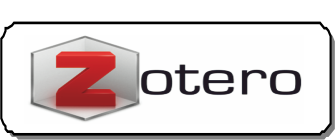Efektivitas Pembelajaran Sejarah Kebudayaan Islam dengan Menggunakan Multimedia Autoplay di Kelas XI Madrasah Aliyah Kota Samarinda
Abstract
The history of Islamic culture is one of the subjects that emphasizes more on historical stories. Multimedia autoplay is one of the media that helps SKI learning more interesting and innovative, not just to present conventional learning. This is in accordance with the development of the industrial revolution era 4.0. The purpose of this research was to determine the effectiveness of learning outcomes of the history of Islamic culture by using multimedia autoplay in class XI Madrasah Aliyah Samarinda City. This type of research used in this research is quasi-experimental design with pretest-posttest control group design. The population in this research were all Madrasah Aliyah, Samarinda City, East Kalimantan Province and the samples used in this research were two classes from three schools namely MAN 2 Samarinda, MA Terpadu Al Uswah, and MA Al Mujahidin with the purposive sampling technique. Data collection techniques used are tests and documentation. The data analysis technique used is the t test with the prerequisites for normality tests using Kolmogorov Smirnov and homogeneity tests using Levene's. Judging from the average learning outcomes, the results of this research are that using Multimedia Autoplay is greater than the conventional method. Thus the used of Multimedia Autoplay is effective against learning outcomes of the history of Islamic culture in Madrasah Aliyah, Samarinda City.
References
Alfin, Jauharoti. Pengembangan Materi sejarah Kebudayaan Islam Sebagai Bahan Ajar Literasi Membaca di Madrasah Ibtidaiyah. Journal of Islamic Education Studies, Vol.7, No.1, 2019.
Agustini, Putu Putri dkk. Penerapan Model Pembelajaran Berbasis Masalah Berbantuan Media Audi Visual untuk Meningkatkan Hasil Belajar Keterampilan Menyimak Tema Sejarah Peradaban Indonesia Pada Siswa Kelas V SDN 8 Sumerta, e-Joournal PGSD Universitas Pendidikan Ganesha Jurusan PGSD Vol 4 No 1. 2016.
Bisri, Khasran. Strategi Guru Sejarah Kebudayaan Islam Dalam Merekonstruksi Materi Tentang Penerangan Dalam Perdaban Islam di MA Ali Maksum Krapyak Yogyakarta. Jurnal Pendidikan Agama Islam, Vol XIII No 2. 2016.
Budiyono. 2013. Statistika Untuk Penelitian. Surakarta: Sebelas Maret University Press.
Daryanto, Media Pembelajaran, Yogyakarta: Gava Media, 2010.
Fitria, Dini dan Johan Andriesgo. Penerapan Model Pembelajaran Berbasis Powerpoint Untuk Meningkatkan Hasil Belajar Siswa Pada Bidang Studi Sejarah Kebudayaan Islam. Jurnal Pendidikan Agama Islam, Vol 5 No 2. 2019.
Fitriani, Okta dkk. Development of Interactive Learning Media Using Autoplay Studio 8 for Hydrocarbon Material of Class XI Senior High School. . Journal of Educational Sciences Vol 4 No 2. 2020.
Idris. Efektivitas Penggunaan Teknologi Informasi dan Komunikasi Dalam Pembelajaran Pendidikan Agama Islam. POTENSIA: Jurnal Kependidikan Islam, Vol.1, No.2 2015.
Indriani, Nelly dan Irwan Setiawan. Membangun Game Edukasi Sejarah Walisongo. Jurnal Ilmiah Komputer dan Informatika (KOMPUTA) Vol I no 2. 2018.
Ikhwanul Muslimin, Muhammad. Pengaruh Media Pembelajaran Video Animasi Terhadap Hasil Belajar Pendidikan Kewarganegaraan Kelas II SD. E- Jurnal Prodi Teknologi Pendidikan Vol. VI Nomor 1 Tahun 2017.
Kholis, R. Ahmad Nur. Analisis Tingkat Kesulitan Soal Pada Buku Sejarah Kebudayaan Islam Kelas 8 Kurikulum 2013, Jurnal Penelitian Ilmiah INTAJ, Vol 01, No 02, 2017.
Kurniawati, Ayu. Pengembangan Media Pembelajaran Menggunakan Microsoft Power Point, Yogyakarta: UIN Yogyakarta, 2011
L. Siberman, Melvin. Active Learning 101 strategies to Teach Any
Subject. (Allyn and Bacon, Boston, 1996). Penerjemah, Raisul Muttaqien, Active Learning 101 Cara Belajar Siswa Aktif. Bandung: Nuansa Cendekia, 2014.
Jannah, Miftahul. Development of Interactive Learning Media using Autoplay Media Studio 8 for Colloidal Chemistry Material. JES Journal of Educational Sciences, Vol 3 No 1, 2019.
Muna, Ani Roisatul. Analisis Materi Buku Siswa Sejarah Kebudayaan Islam Kelas IX MTs Terbitan Kemenag Dalam Kurikulum 2013. EDISI: Jurnal Edukasi dan sains Vol 2 No 1, 2020.
Putrawangsa, Susilahudin., Uswatun Hasanah, Integrasi Tekhnologi Digital Dalam Pembelajaran Di Era Industri 4.0, Jurnal TATSQIF Jurnal Pemikiran dan Penelitian Pendidikan Vol 16 Nomor 1 Juni 2018.
Razak, Abdul dan Rumainur. Efektivitas Penggunaan Multimedia Auto Play Etnik Kalimantan Timur Terhadap Hasil Belajar Matematika SD Fastabiqul Khairat Kelas VI di Kota Samarinda. JMIE: Journal of Madrasah Ibtidaiyah Education, 2(1), 2018.
Riffriyanti, Eni. Variasi Metode Pembelajaran SEjarah Kevudayaan Islam (SKI) di MTS Miftahul Ulum Weding Bonang Demak, Jurnal Studi dan Penelitian Pendidikan Islam, Vol 2,No 2. 2019.
Roffiq, Ainoer dkk. Media Musik dan Lagu dalam Proses Pembelajaran. Jurnal Pendidikan Dasar Indonesia Vol. 2 Nomor 2 Tahun 2017.
Setiawan, Agus. “Implementation of Islamic Education Study Program Learning Based on Blended Learning in the Industrial Era 4.0 at IAIN Samarinda,” Dinamika Ilmu 19, no. 2 (December 15, 2019): 305–21, https://doi.org/10.21093/di.v19i2.1781.
____________ “Merancang Media Pembelajaran PAI di Sekolah (Analisis Implementasi Media Pembelajaran Berbasis PAI),” Darul Ulum: Jurnal Ilmiah Keagamaan, Pendidikan dan Kemasyarakatan, December 1, 2019.
Setyawan, Dedi., Andini Dwi Arumsari, Pengembangan Media Pembelajaran Audio Visual Pada Mata Pelajaran Sejarah Kebudayaan Islam. EDUCULTURAL: International Journal of Education, Culture and Humanities. Vol 1, No.2 2019.
Sofi, Euis. Pembelajaran Berbasis E-Learning Pada Mata Pelajaran Sejarah Kebudayaan Islam Kelas VIII Madrasah Tsanawiyah Negeri. Dalam Jurnal TANZHIM Jurnal Penelitian Manajemen Pendidikan Vol. 1 No.1 Tahun 2016.
Sudjana, N. Penilaian Hasil Proses Belajar Mengajar. Bandung: Remaja Rosdakarya, 2006.
Usman, Basyiruddin dan Asnawir Media Pembelajaran, Jakarta: Ciputat Pers, 2002.
Wijaya, Inesa. Lusia Rakhmawati. Pengembangan media Pembelajaran Autoplay Media Studio Pada Mata Pelajaran Perekayasaan Sistem Audio di SMK Negeri 3 Surabaya. Jurnal Pendidikan Tekhnik Elektro, Vol 4 no 3 Tahun 2015.
Please find the rights and licenses in SYAMIL Jurnal Pendidikan Agama Islam (Journal of Islamic Education). By submitting the article/manuscript of the article, the author(s) agree with this policy. No specific document sign-off is required.
1. License
The non-commercial use of the article will be governed by the Creative Commons Attribution license as currently displayed on Creative Commons Attribution-ShareAlike 4.0 International License.
2. Author(s)' Warranties
The author warrants that the article is original, written by stated author(s), has not been published before, contains no unlawful statements, does not infringe the rights of others, is subject to copyright that is vested exclusively in the author and free of any third party rights, and that any necessary written permissions to quote from other sources have been obtained by the author(s).
3. User/Public Rights
SYAMIL spirit is to disseminate articles published are as free as possible. Under the Creative Commons license, SYAMIL permits users to copy, distribute, display, and perform the work for non-commercial purposes only. Users will also need to attribute authors and Register on distributing works in the journal and other media of publications. Unless otherwise stated, the authors are public entities as soon as their articles got published.
4. Rights of Authors
Authors retain all their rights to the published works, such as (but not limited to) the following rights;
Copyright and other proprietary rights relating to the article, such as patent rights,
The right to use the substance of the article in own future works, including lectures and books,
The right to reproduce the article for own purposes,
The right to self-archive the article (please read out deposit policy),
The right to enter into separate, additional contractual arrangements for the non-exclusive distribution of the article's published version (e.g., post it to an institutional repository or publish it in a book), with an acknowledgment of its initial publication in this journal (SYAMIL Jurnal Pendidikan Agama Islam (Journal of Islamic Education)).
5. Co-Authorship
If the article was jointly prepared by more than one author, any authors submitting the manuscript warrants that he/she has been authorized by all co-authors to be agreed on this copyright and license notice (agreement) on their behalf, and agrees to inform his/her co-authors of the terms of this policy. SYAMIL will not be held liable for anything that may arise due to the author(s) internal dispute. SYAMIL will only communicate with the corresponding author.
6. Royalties
Being an open accessed journal and disseminating articles for free under the Creative Commons license term mentioned, author(s) aware that SYAMIL entitles the author(s) to no royalties or other fees.
7. Miscellaneous
SYAMIL will publish the article (or have it published) in the journal if the article’s editorial process is successfully completed. SYAMIL editors may modify the article to a style of punctuation, spelling, capitalization, referencing and usage that deems appropriate. The author acknowledges that the article may be published so that it will be publicly accessible and such access will be free of charge for the readers as mentioned in point 3.












